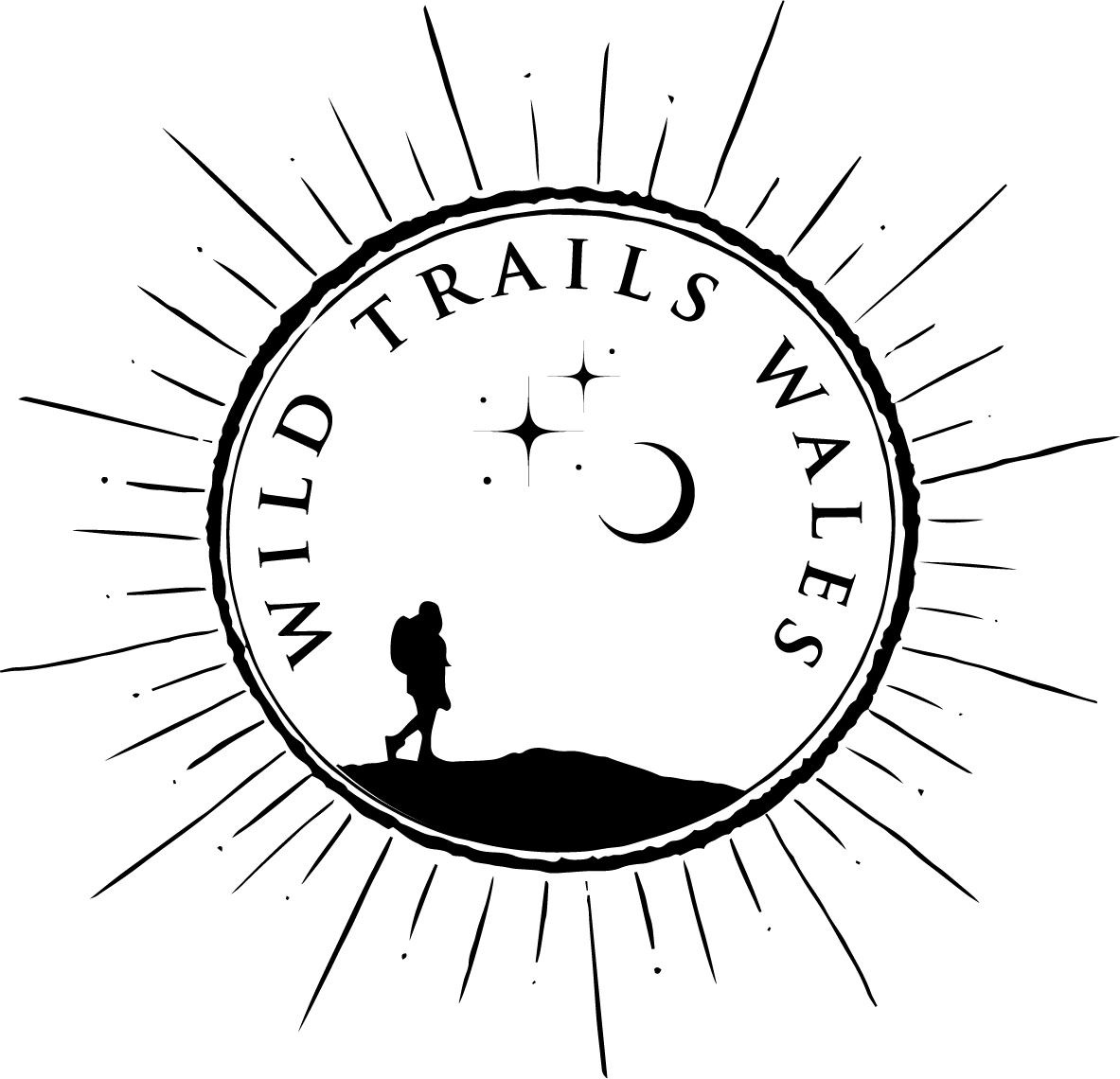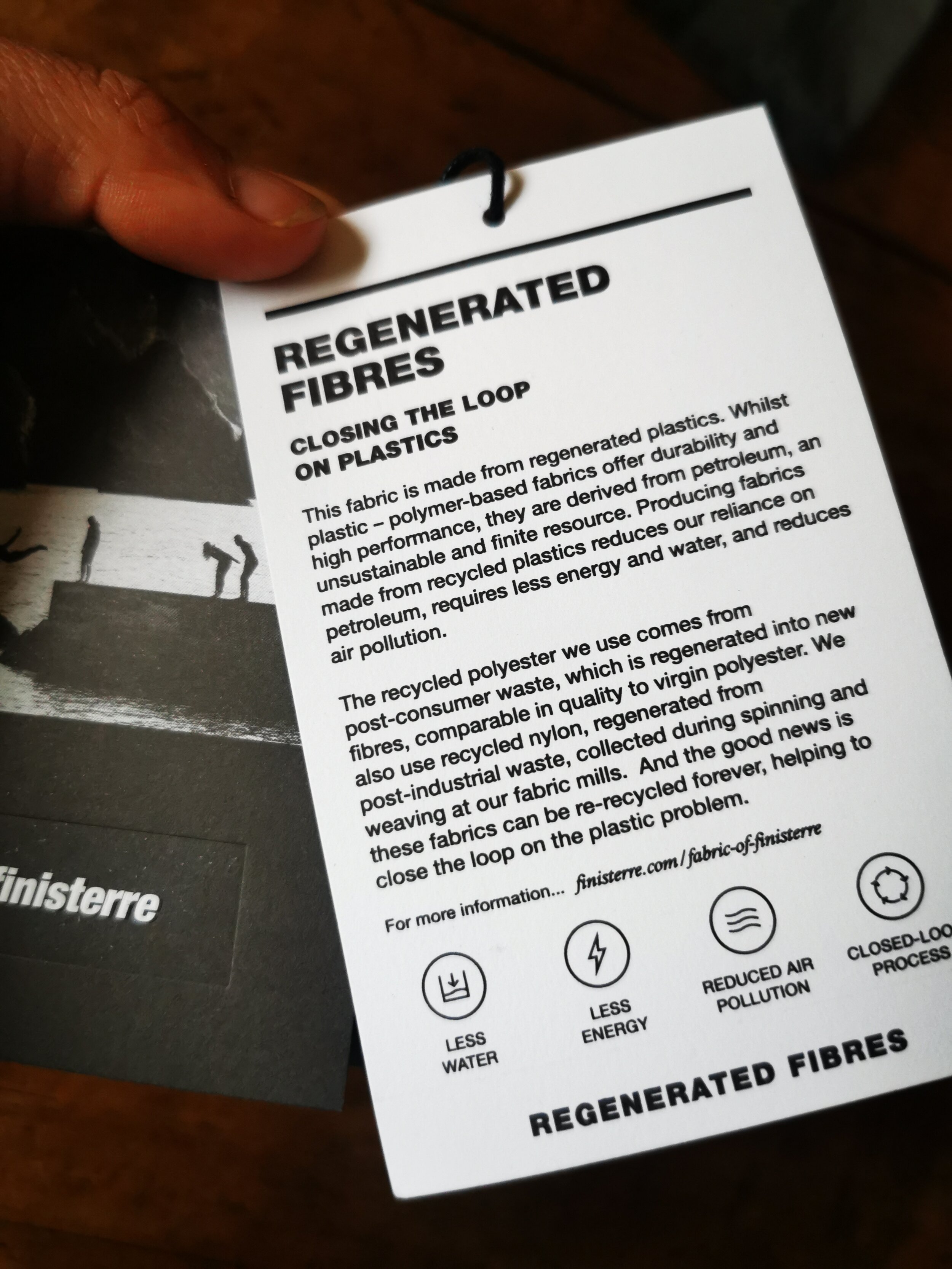leave no trace - what about our clothing?
Anyone who spends much time outdoors will know the importance of taking some time and consideration in choosing their clothing and equipment. Performance of clothing or equipment in terms of being waterproof, warm, having good grip or fitting well is probably what we value most. Not getting it right can make the difference between an enjoyable day out and a really miserable one, potentially even dangerous.
Less dramatically, comfort makes all the difference too. Lower down the list is choosing something that looks nice, that you’ll feel happy wearing.
But how many people give thought to the environmental impact of their clothing? How many people would even know there was an issue? It’s so simple to go to the shop, lift something suitable off the shelf, then go on your way, none the wiser.
So what exactly are the issues?
Waterproof Clothing and Equipment
The first major issue, one that is a big problem when it comes to outdoor clothing and equipment manufacture, are compounds called Polyflourinated Chemicals (PFCs). These are man-made chemicals used in the production and treatment of waterproof clothing, tents, boots and drybags. They are not naturally occuring in nature, and can cause huge problems to the health of animals and humans, through endocrine (hormone) disruption and potential carcinogenic effects.
The big problem with these compounds is that they so very easily enter the water cycle through the manufacturing, use, and disposal of these products. They can also become wind borne, and a recent study by Greenpeace found PFCs in remote glacial lakes, snow, and even in the organs of polar bears. They can take hundreds of years to break down. When we go somewhere wearing products with PFCs, we leave an invisible trace of them behind us. When I found this out it shocked and upset me, I’m a firm believer in leaving no trace, so I was pretty upset to know I was causing real harm to the environment through my clothing choices.
So, what is the alternative? We need to stay dry when we’re out in the elements, so we can’t exactly give up our waterproof clothing can we? Thankfully there has been some excellent work in coming up with alternatives to PFCs. Some of the main outdoor brands have got behind Greenpeace’s ‘Detox Outdoors’ campaign and worked to develop new waterproof fabrics and treatments. I have to say, having invested in some early examples, I have had mixed results, so it is always worth reading reviews and asking around for other people’s experiences.
To find out more about the issues with PFCs, here is a link to Greenpeace’s Detox Outdoors campaign website.
Materials
Another issue to consider is what the rest of your clothing and equipment is made of. Plastics are less than ideal given the amount of time they take to decompose, and the shedding of microplastics into the environment. Yet most outdoor clothing is made of some form of plastic.
Some alternatives, which perform really well in my experience are Tencel (made from sustainable eucalyptus sources), Merino wool (you might want to check the animal welfare standards for the particular brand you are buying though), and Bamboo (again, check it is from a sustainable source).
What else can I do?
Before you throw away all your un-environmentally friendly equipment out of guilt, and rush out to buy new, sustainably-produced kit, consider that the most sustainable piece of kit is arguably the one you already own. The idea of ‘Reduce, Reuse, Recycle’ works well here. The first thing to do is to reduce the amount you buy. This might take a bit more effort as you’ll want to be sure when you’re making a purchase that it ticks all the performance, comfort and wearability boxes so that you don’t end up needing to buy something else because that purchase didn’t work well. Think about whether you really need the ‘new-season’ or next version coat, tent, or pair of boots. Is this season’s tiny tweak or upgrade really worth it? Can you buy second hand? Or is it possible to recycle or sell on your old kit when it is time to upgrade?
When washing clothing containing plastic fibres, consider using a washing bag, which can help trap microplastics and prevent them entering the water cycle.
Look after your kit so it will last longer - clean the mud off your boots and dry them out properly after a walk, re-proof them often using a non-PFC waterproof treatment. Make repairs when you can.
Ask questions in shops, read labels, write to manufacturers, and use your purchasing power. Of course cost is an issue for most of us too; even more reason to purchase carefully and thoughtfully.
A few brands to check out:
I’ve spent a fair bit of time researching and although I’m not really someone who cares much about brands or labels for image sake, some of the more environmentally-focused companies which I have found to be effective include:
Paramo - probably the market leader in sustainable waterproof clothing, using their own pioneered Analogy Fabric which mimics the action of animal fur to push water away from the skin. They’re also socially responsible too, working with the Miquelina Foundation in Colombia to ensure fair trade standards for clothing produced there.
Finisterre - A surfing brand first and foremost, but I love their merino base layers for mountain days almost all year round, and their active wear range made from recycled plastic bottles and Tencel are really comfortable to walk in during summer in the hills and on lowland and coastal trails. Their early non-PFC waterproof coats just didn’t cut it for me in welsh mountain rain, but they have been working on them, so perhaps their newer versions are better. I also love their wool hats, headbands, and neck warmers.
Vaude - Great environmentally sustainable options for tents, sleeping bags and other equipment. I haven’t tried any of their clothing so can’t speak for that.
NikWax - For re-waterproofing clothes and boots, NikWax doesn’t use PFCs in their products.
Icebreaker - For sustainable and high animal welfare merino products. Their products are pretty pricey so I picked mine up in a sale in the spring.





